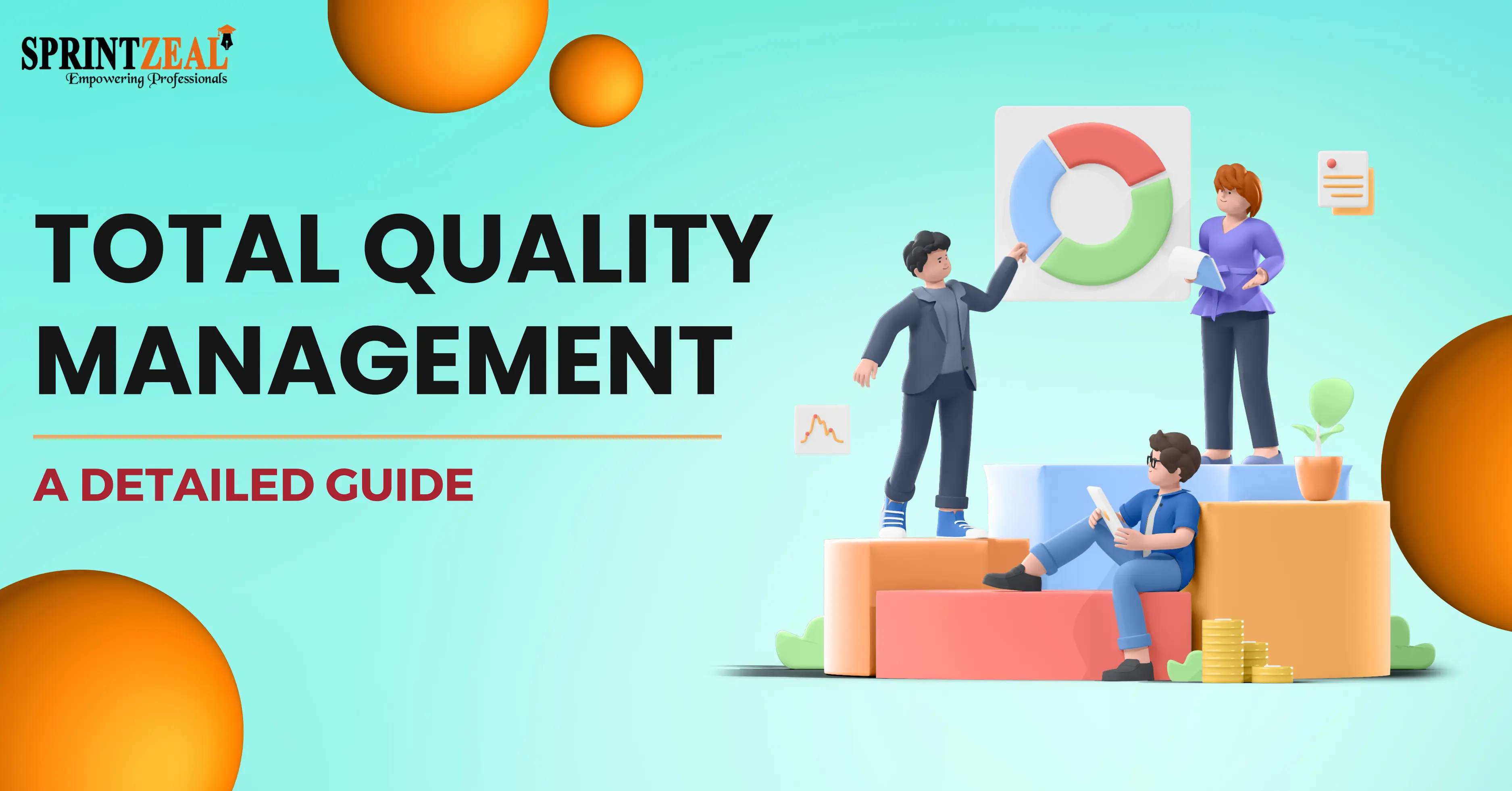What Is Lean Management?
-
 By Imran
By Imran - Published on Apr 20 2023

Table of Contents
What Is Lean Management?
Have you ever heard the term ‘lean management’? Are you searching for an ideal place to access information regarding it? Then, you are at the right place, as here you can get all the information you need regarding this subject.
Generally, it has become a universal management tool that ensures the delivery of value and optimizes workflow. You don't need to worry if you haven't used these tools for your business. But, if you still prefer to avoid the use of these tools, then you are going to miss important things.
It can improve the efficiency of your businesses and/or organisations. Make sure to stick with this article to get familiar with the 5s management principles.
However, it is crucial to know that it is now widespread across the entire industry. So, let's explore more about lean process management and go ahead with this article.
Crucial Thingsa to Know About Lean Management
If we talk about the definition, then it is all about creating value. Do you know what makes your organisation profitable? The things that are not included in the company's production value are mainly considered waste.
The main objective is to create processes that primarily work towards continued success. The one who believes in this concept also looks at value and progress with the eye of the customer.
In this concept, customers are considered the most essential and respected stakeholders. Everything can be crucial, which is why even day-to-day activities are scrutinised under the lean daily management system.
It is essential to know that there are possibly other goals of this type that include maximising profits by increasing the value of the overall process of the product. There is no escaping the fact that businesses require all the latest technology and techniques to get proper growth and enhance their growth rate.
Lean daily management system tools also include a lot of process examination and this perspective from several leaders in the organisation, as well as mapping the processes that are adding value to the organisation. It is crucial to understand that the process is accompanied by structure plans that map out the entire process.
Advantages of Lean Process Management Methods
There are significant advantages for managers in implementing lean process management methods, and some of them are listed below:

Concentration
If you apply Lean methodology, you will reduce waste. And at the end, your staff will focus on the actual activities that add any value.
Improved productivity and efficiency
If your employees are doing their work with a focus on creating the products, their work will become even more productive and efficient, and the reason is that they are not getting distracted by any unclear tasks at all.
A smarter process
However, if you are establishing the traction systems, you will also be able to provide the work, but only if there is any actual demand.
Better use of resources
If you base your production on the actual demand, you will get the only help that you need, such as avoiding waste.
Ideas behind Lean methodology
Here we are going to describe how the Lean methodology relies on three very simple ideas:
For this, when you get to know the core idea, make sure to dig deeper, learn the most basic and essential principles, and where it comes from.
If you are going to start with basic Lean principles, before you go further, you must realise that this Lean methodology is all about improving work processes. Even so, it is constantly improving its goals and people.
You should know that lean project management always makes sure to encourage and share all the responsibility and the leadership, so you do not need to hold total work control processes and keep the spotlight anymore.
And that is the reason why the two main pillars of the Lean methodology are:
- The first is "Respect for people," and the second is "Continuous improvements."
- It trusts the people who make sure to do the job the way it should be done.
- And at this rate, it is a concept that is widely adopted across many industries.
There are numerous benefits to it. When you apply the lean management system, you can easily focus on quality. You don't need to waste your time involving yourself in avoidable activities. Lean quality management system allows you to reduce unnecessary activities most effectively and conveniently. You need to be focused on the activities that bring value.
It helps to improve overall productivity and efficiency. When you can focus on only providing value, it will allow you to be more productive and efficient. This is because it doesn't distract you from waste or protect you from unclear tasks.
Suggested Course – Lean Six Sigma Green Belt Certification
The Birth of Lean Management
It was the late 1940s when Toyota laid the foundations of Lean manufacturing; they made sure to reduce the processes that could not bring down the value of the end products. And by doing this, they finally achieved success in achieving significant productivity improvements in the time cycles and cost efficiency as well.
The Lean Software Development
In 2003, Mary and Tom Poppendieck published their book, which is known as "Lean Software Development: An Agile Toolkit." In this book, you will be able to learn how you should apply the initial principles of this lean methodology to software development.
History of Lean Management
Now let's talk about the importance of the process. Before going further, it is essential to know something about its history. The history mainly begins with the Automotive Industry.
It is essential to understand that Henry Ford started on the path to efficiency with the Model T in the 1920s. The assembly line and the lean quality management production process were considered the first of their kind to implement the improvement with continuity.
If you are willing to increase the overall growth rate of your business or organisation, then you need to consider the concept of a lean quality management system. This will help you see practical changes in your company's productivity level.
What is Lean in Business?
Lean in business plays an important role. According to sources, it was found that an engineer and the serial entrepreneur who developed the process, which is based on lean principles, helped the startup succeed most dramatically.
The concept mainly consists of five basic principles, which are essential to follow for better results. It is highly recommended to follow all the principles to aim for the growth of a startup.
It doesn't matter if your business is just a startup or something big; lean project management is essential for all. Such a system helps make your organisation more flexible and responsive to accept the changes positively.
If we see from a business point of view, then lean is considered for the product development cycle and helps discover if your business's concept is viable or not. Mainly, this process is also employed by the government structure, including marketing professionals and many others.
As we all know, lean management can't be ignored. If you want positive results, it is highly suggested that you rely on lean project management. The main objective of this methodology is to make decisions in a moment and ensure that they contribute by evolving gradually.
It is all possible to foster the desire in people and the continuous development process. Now let's talk about the basic principles for accessing better outcome returns.
Suggested Course – Lean Six Sigma Black Belt Certification
What are Basic Lean Management Principles?
It is an agile process that helps increase the value of customers by eliminating all kinds of waste from every project phase. However, it is no secret that pre-planning and management are the keys to the success of any business or organisation.

In that case, a lean quality management system helps to get more effective results and increases productivity.
We all know that it is essential to know these principles. The value mainly lies in the problem you are trying to solve for the customers. Like other lean methods, this also results in less surplus to keep your project in healthy conditions.
We all know that customer value is significant for better results. Therefore, it is highly recommended to increase the customer's value at any cost to maintain the growth level.
If we talk about the five principles of lean management, these principles will serve as the best way to consider this process. You need to follow these steps if you want to have the best chance of reducing product waste.
The best thing about it is that it helps to stay within the project's scope and meet all the critical success factors. These are sometimes referred to as the 5S lean management principles.
- Identification of values
The first principle includes the process of identifying the values. It is considered a core principle, which helps to recognise the value of the product. To proceed with these principles, you need to know your stakeholders.
You may have time to create projects for the internal stakeholders most of the time. On the other side, you may have customers who are external stakeholders. In any case, you need to identify the value of the product.
In the case of internal stakeholders, it is the shareholders of the project who detect the development of the product, as they also have a stake in its success.
In the case of external stakeholders, it is the customer who mainly buys the product or service, and it is directly affected by its quality. Therefore, when you know for whom you are building the product, you can quickly determine how to make it more valuable.
- Mapping the value
Value stream mapping is the second principle. This principle is directly known as VSM, and it is a visual tool that mainly includes diagramming the content workflow with your ideal workflow from beginning to end.
Mostly, this principle is all about the comparison to maintain the value. When you compare the two different workflows, you can quickly inspect the waste or worthless things in the project.
There are different types of waste that you may figure out through the value stream mapping system. However, you can quickly see how these items may translate to other industries.
- Most of the time, overproduction and many useless software features can address costs like space and water.
- You may also find inventory waste from incomplete work or projects that lead to a lousy management system.
- Motion waste is prevalent in business, and it can cost you money as well. It is waste when it includes the unnecessary cost of the internal motion by people or machines.
- Defects are also a type of waste, and they can result in costly repairs and the loss of material. Technical debt mainly leads to the loss of valuable time.
- Over processing waste is often found in businesses or organisations. It can lead to several unnecessary costs, such as upgrading a product that users didn't even like.
- Waiting waste is also worthless, and it is essential to eliminate it from management. Waiting for trash is the cost that results from a delayed timeline in the final product deliverables.
- Creation of the flow
In this stage, you will need to rework your project management plan, and it is essential to be more efficient by removing the waste you identified in the second phase. To perform this step, you need to break down every stage of the lean project management process, and then you need to reconfigure the entire process as per the requirements.
Use the project milestone as a checkpoint to ensure new waste doesn't appear during the project's progress.
You also have to establish open communication with your team members. It is considered the most effective way to make sure of a better VSM. When you are done with the process, you can proceed further to keep the waste from building back up.
- Establish pull
Establishing pull is considered the fourth principle, and mainly, setting pull is the pulling of work from the previous process stage when the work is complete. The phase was explicitly designed for manufacturing to help the company or factories meet the customers' demand with a just-in-time inventory system.
The best thing about this phase is that it helps to keep your workflow moving efficiently. It is essential to know that establishing pull can also help the team in several industries, and it keeps the work moving seamlessly throughout the entire cycle or project.
- Improvement process
If we talk about the fifth principle, it is the improvement process. The lean management continuous improvement stage includes continuous improvement. To perform this process, it is essential to complete all the above-mentioned steps, and then only you can proceed with this step.
It is not about one thing. Instead, it includes an iterative process. If you want to achieve perfection, you need to prioritise this phase. You will have to assess your value of the product intermittently and analyse the entire workflow throughout the process with the help of such a continuous improvement system.
Conclusion
Now almost every business or organisation prefers lean management for better results. Especially thanks to its core values and positive impact on the company's overall level of performance, the kaizen lean management concept mainly appears to be a universal management tool.
The best thing about it is that you can also apply the concept of lean to any business or the process of production, which includes everything from manufacturing to marketing to software development. Make sure to prefer lean operations management for better results.
To get Six Sigma training and earn a Six Sigma certification, chat with our six sigma course expert.
Subscribe to our Newsletters
Popular Programs
Trending Posts
Quality Manager Salary: What Freshers & Experts Earn in 2025
Last updated on Feb 3 2025
Total Quality Management - A Complete Guide for Beginners
Last updated on Nov 6 2023
Financial Analyst Interview Questions and Answers 2024
Last updated on Jan 13 2023
Six Sigma Certification – Everything you Need to Know About Getting Certified
Last updated on Nov 8 2023
Six Sigma Certifications - Reasons Why you Should Get Them
Last updated on Aug 18 2022
The Ultimate Guide to Lean Manufacturing
Last updated on Jan 5 2024
Categories
- Agile Management 54
- AI and Machine Learning 42
- Big Data 53
- Business Management 51
- Cloud Computing 44
- Digital Marketing 56
- Information Security 8
- IT Hardware and Networking 17
- IT Security 103
- IT Service Management 29
- Leadership and Management 1
- Microsoft Program 2
- Other 43
- Programming Language 31
- Project Management 162
- Quality Management 75
- Risk Management 8
- Workplace Skill Building 2
Trending Now
Top Career benefits of Lean Six Sigma Green Belt
ArticleLean methodology, Six Sigma methodology and Lean Six Sigma Explained
ArticleSix Sigma Black Belt Certification – Value and Career Benefits in 2024
ArticlePareto Chart in Six Sigma - Explained
ArticleQuality Management Interview Questions 2024
ArticleSix Sigma Certification Guide - A Professional's Guide
ArticleSix Sigma Yellow Belt Certification - Six Sigma for Beginners
ArticleQuality Control Explained – Six Sigma
ArticleTotal Quality Management - A Complete Guide for Beginners
ArticleQuality Assurance in Six Sigma Explained
ArticleQuality Assurance vs Quality Control
ArticleSix Sigma Certification – Everything you Need to Know About Getting Certified
ArticleLean Six Sigma on Resume for Rewarding Career Benefits
ArticleQuality Manager Interview Questions and Answers for 2025
ebookService Delivery Manager Interview Questions and Answers (With Examples)
ArticleSix Sigma Interview Questions and Answers 2024
ArticleHow to become a Quality Analyst
ArticleA Supply Chain Management Guide to Mastering Logistics End to End
ArticleSenior Quality Manager Interview Questions and Answers 2024
ArticleTop 30 Quality Analyst Interview Questions and Answers 2025
ArticleFinancial Analyst Interview Questions and Answers 2024
ArticleRisk Manager Interview Questions and Answers 2024
ArticleCompliance Manager Interview Questions and Answers 2024
ArticleOperation Manager Interview Questions and Answers
Article5 Lean Continuous Improvement Principles to Supercharge Your Operations
ArticleHow to Become a Quality Manager - Career, Job Scope and Certifications
ArticleEssential Components of a Quality Management System
ArticleSix Sigma Certifications - Reasons Why you Should Get Them
ArticleTop Qualities of a Good Manager and a Leader
ArticleLearn about Statistical Process Control (SPC) and its top applications
ArticleCost of Poor Quality - A Detailed Guide
ArticleImplementing 5S Methodology for Better Work Efficiency
ArticleBest Six Sigma Books in 2024
ArticleLeadership vs Management - The Ultimate Guide
ArticleQuality Assurance Plan - Six Steps To Quality Assurance Plan
ArticleOperational Planning Creation, Key Elements and its Benefits
ArticleA Complete Guide to Product Life Cycle Stages 2025
ArticleSix Sigma tools for DMAIC Phases
ArticleWhat Is Lean Manufacturing?- An Overview
ArticleThe Lean Continuous Improvement Model: A Comprehensive Guide
ArticleDMAIC vs. DMADV: Key Differences and Choosing the Right Six Sigma Methodology
ArticleA Deep Dive into the Power of Lean Continuous Improvement Process
ArticleLean Continuous Improvement Methods for Business Excellence
ArticleIntroduction to Lean Manufacturing- Definitions, Framework, and More
ArticleUnderstanding the Key Principles of Lean Manufacturing
ArticleSecret to Unlock Organizational Excellence: Stages of Continuous Improvement
ArticleLean Continuous Improvement: A Detailed Guide to Mastering Organizational Quality
ArticleLean Waste Management: The Ultimate Guide 2023
ArticleA Deep Dive into Lean Continuous Improvement Tools
Article8 Wastes of Lean - Strategies for Identification and Elimination
ArticleThe Ultimate Guide to Lean Manufacturing
ArticleUnderstanding Lean Manufacturing's Pros and Cons
ArticleLean Waste Reduction Strategies: Boost Efficiency and Cut Costs
ArticleTop 10 Lean Manufacturing Tools for Optimal Productivity
ArticleBeyond the Basics: Benefits of Lean Continuous Improvement
ArticleWhat are Quality Standards? | A Guide to ISO Standards
Article7 Important Types of Quality Management System
ArticleA Comprehensive Guide to Quality Management Systems
ArticleISO 9001 Standard: Benefits and Certification
ArticleBenefits of QMS Certification for Your Business
ArticleStep-by-Step Implementation Guide to ISO 9001
ArticleThe Ultimate Guide to ISO 9001: Boosting Quality and Certification Success
ArticleQuality Management System – QSM Approaches and Methodologies
ArticleHow to Effectively Implement a Robust Quality Management System?
ArticleExplaining QMS Documentation Structure: Benefits and Best Practices
ArticleWho Needs ISO 9001 Certification and Why?
ArticleKey Elements of ISO 9001:2015 Quality Management System
ArticleOvercoming Common Challenges in ISO 9001 Certification: Tips and Best Practices
ArticleBest Quality Management Tools
ArticleTotal Quality Management (TQM) vs. Six Sigma
ArticleQuality Manager Salary: What Freshers & Experts Earn in 2025
ArticleCertified Scrum Product Owner: Job Roles And Responsibilities
ArticleTips for Continuous Integration Testing: Streamlining QA
Article10 Quality Management Strategies Adopted by Top Managers
Article

















